13 Vintage Station Wagons Making a Comeback Among Collectors
First produced in the early 1900s, station wagons were designed for families in need of a practical, spacious vehicle. These cars quickly became iconic for their ability to carry both passengers and gear, perfect for road trips and weekend getaways. Over the decades, station wagons evolved, gaining a stylish flair that appealed to a wide range of drivers. In recent years, these vintage wagons have seen a resurgence in popularity among collectors.
This post may contain affiliate links, which helps keep this content free. Please read our disclosure for more info.
1955 Chevrolet Nomad
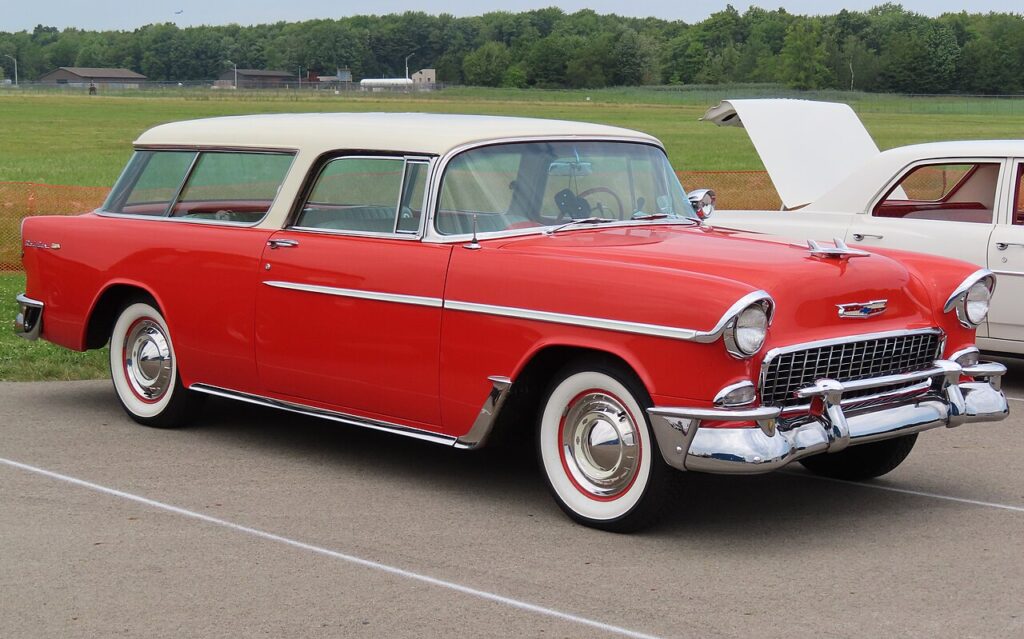
The 1955 Chevrolet Nomad first appeared as part of Chevrolet’s Tri-Five series and was priced around $2,571 at launch. Its comeback among collectors is driven by its unique two-door wagon design, stylish hardtop appearance, and relatively low production numbers compared to sedans. Recent listings show asking prices around $100,000 for well-restored or original examples. Its appeal comes from the blend of sporty design and classic wagon utility, making it stand out. Many collectors view it as one of the most iconic American station wagons of the 1950s.
What adds to its collector appeal is that the Nomad was positioned as a premium wagon at the time, giving it higher factory trim and thus, rarer surviving examples. Its styling-including the chrome work and roofline-helps it age well and attract attention. Condition, originality and documentation affect value significantly. For someone looking to invest in wagons, this one ticks many boxes. It now often appears in classic car auctions, and values have risen as interest in wagons increases.
1974 Oldsmobile Vista Cruiser
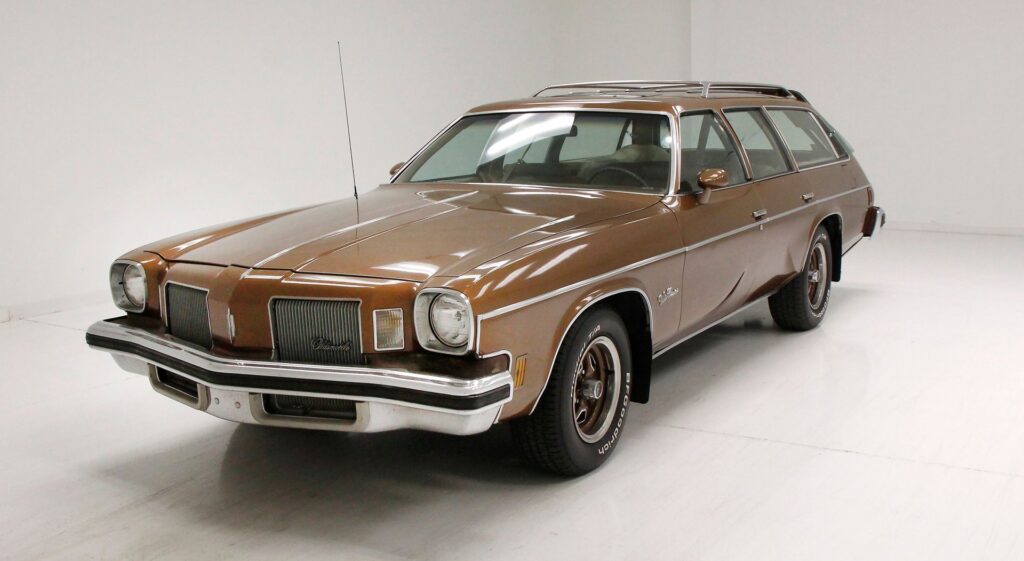
The 1974 Oldsmobile Vista Cruiser was produced in the era when station wagons were full-sized family cars, originally selling for around $4,499 (base price) according to period data. It’s returning to collector awareness because of its distinctive styling (including panoramic rear roof glass on earlier versions) and the fact that few remain in good condition. Typical values for excellent examples are currently around $13,000 to $15,000, with some rare ones reaching higher. The wagon’s link to the American family culture of the 1960s-70s gives it nostalgic appeal. It appeals especially to collectors who want a large family-wagon icon rather than a performance car.
What helps this model’s interest is that it represents a time before SUVs dominated, and it carries original charm with wood-grain trim, multiple seating rows and a big roof rack. Original engines, correct color schemes and intact interiors are all premium features. Since many were used hard and scrapped early, well-preserved examples are becoming scarcer. If you find one with low mileage and original papers, it could be a smart addition. The market for these wagons is quieter than for sports cars but appears to be strengthening.
1964 Volvo V-145 Wagon

The 1964 Volvo 145 station wagon launched in the early 1960s when Volvo built sturdy, practical cars with European flair. These wagons are being rediscovered by collectors thanks to their durability, minimalist design and rarity in North America. Current market values for well-kept examples run around $10,000 to $20,000 depending on condition and originality. Their appeal lies in the mix of Scandinavian build, simplicity and usefulness as usable classics. They also offer something different among the many American wagon options.
Because many 145 wagons were used thoroughly and scrapped, finding one with the right engine, body and rust-free condition gives it an edge. Original color combinations, correct wheels and intact interiors matter when assessing value. Collectors who want something understated but historic often favour these Volvos. The market isn’t huge but interest is steady among classic wagon enthusiasts. Driving one today feels more practical than many sports-car options.
1967 Ford Country Squire

The 1967 Ford Country Squire was a top-trim full-sized station wagon, complete with simulated wood-grain side panels and large seating capacity. Today it’s seeing renewed collector interest because wood-grain wagons evoke a nostalgic appeal and the size, styling and history align with surf culture and mid-century family travel. Values for good examples often sit around $18,000 to $25,000, depending on condition and drivetrain. The appeal lies in its combination of luxury features and family utility in wagon form. For collectors of 1960s American cars, standout versions like this Country Squire are now part of the conversation.
What makes this model rise in interest is that it carries roof-rack options, third-row seating, and that wood-grain trim brings visual flair. Cars that retain the original powertrain, interior trim and bodywork without major rust or modifications are more desirable. Compared with sedans of the era, these wagons had lower survival rates, making intact ones rarer. For someone seeking a vintage American wagon with presence and practicality, this is a strong option. As wagon collecting gains awareness, models like the Country Squire are gaining in value.
1979 AMC Eagle Wagon

The 1979 AMC Eagle Wagon was one of the early crossover-type wagons, offering all-wheel drive and a combination of utility and comfort. It’s drawing collector attention because it foreshadowed the modern SUV and offers a slice of automotive history often overlooked. Market values for clean, low-mileage models are typically in the range of $12,000 to $18,000 as interest grows. It appeals to those who want a bit of off-beat style, historic firsts and a usable vintage wagon. This one stands out because of its all-wheel-drive set-up in wagon form.
Since the Eagle was produced in smaller numbers and many were modified or rusted away, finding one in good condition is rare. Models with factory options, original paint and intact interiors carry a premium. Enthusiasts of early AWD and pre-SUV designs are particularly drawn to the Eagle. Because the wagon form and AWD combination were unusual then, it now holds historic significance. As the broader classic-car market widens its categories, the Eagle is receiving new attention.
1950 Buick Roadmaster Estate Wagon
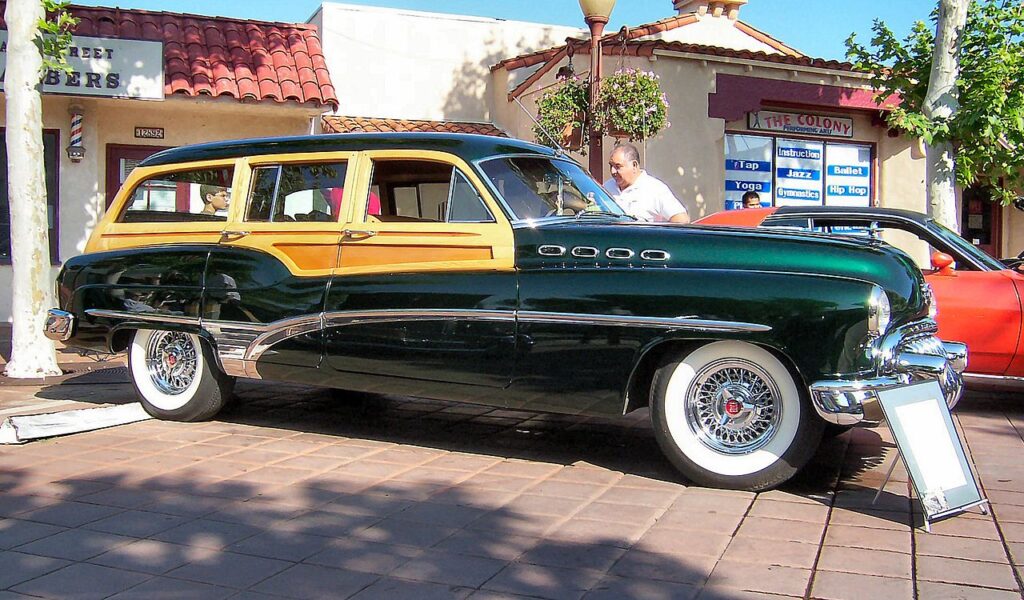
Back in 1950, the Buick Roadmaster Estate Wagon featured real wood panels and luxurious appointments, selling for a higher price than many sedans of the time. Its return to collector favour is due to its luxurious wood-panelled body, big V8 power and rarity of surviving examples in original condition. Prices for good examples are often in the $40,000 to $60,000 range for well-restored cars. The appeal lies in its blend of luxury car features with the wagon body style. It’s a target for those who want a statement piece rather than a run-of-the-mill wagon.
What adds value is the combination of genuine wood body panels (rather than simulated), original engine and drivetrain matched to the time, and minimal rust or rust-repair work. Because many wood-bodied wagons were used extensively and not preserved, survivors are few. Those who collect 1950s American luxury vehicles see this model as an exciting option. Its size, style and heritage make it a standout in wagon circles. For a historic collector piece with luxury appeal, this wagon represents a strong contender.
1963 AMC Rambler Rogue Wagon
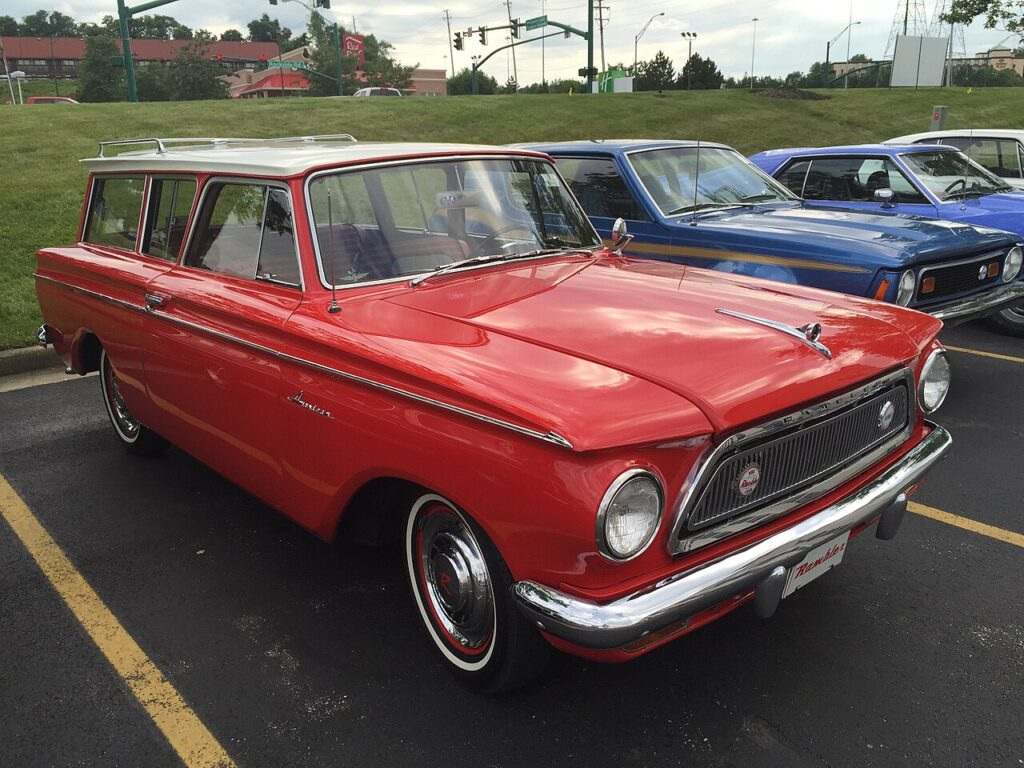
The 1963 AMC Rambler Rogue Wagon was produced in an era when compact wagons were gaining popularity; its value is increasing because of its rarity and unique niche. As small-sized family-wagons from that time rarely survive in good condition, this model is drawing collector interest. Current market values for desirable examples are in the $15,000 to $22,000 range depending on condition and originality. The appeal lies in its compact size, the era it represents and the distinctive American Motors design. For collectors who value something different from the big full-sized wagons, this is interesting.
What helps this model’s appeal is the fact that it was not a popular vehicle in its day, making surviving examples rare. Low production numbers, original factory options and intact interiors increase value. It offers a chance to collect a vintage wagon that isn’t overexposed yet still offers classic car charm. For someone seeking something off-beat among wagons, this Rambler fits the bill. It also offers good usability if one wants to drive it rather than store it.
1957 Chevrolet 210 Handyman Wagon
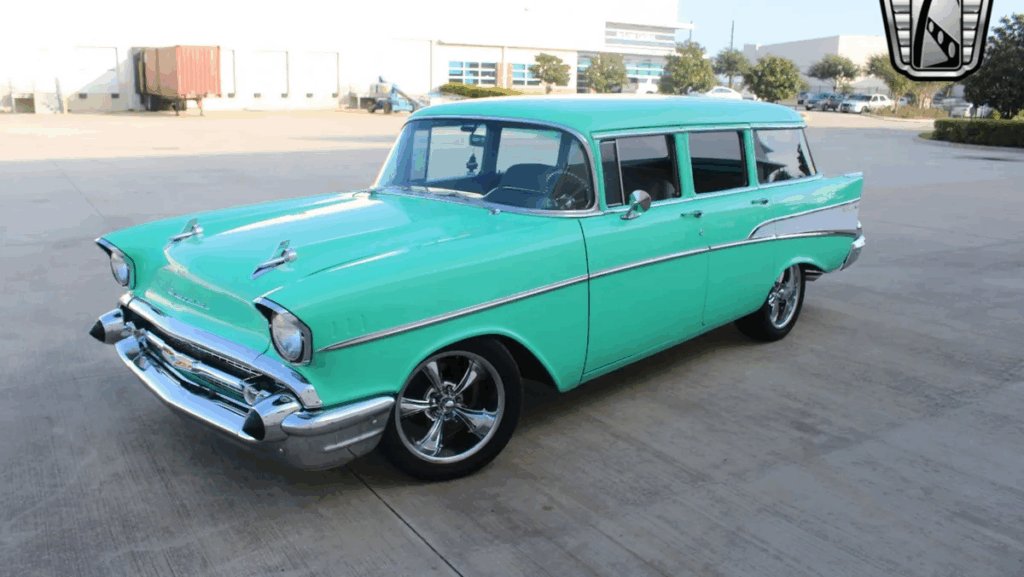
In 1957 Chevrolet offered the 210 Handyman wagon, a relatively modest and functional family car compared with premium models. It’s now standing out because a few untouched, solid-condition originals survive and these carry a certain purity of period. Recent examples have sold in the region of $20,000 to $30,000, sometimes more if rare options or minimal restoration are involved. The appeal comes from the wagon body tied to the 150/210 series, giving collector value without the premium badge. It offers a nostalgic piece of 1950s family motoring rather than a high-end show car.
What adds value is rust-free bodywork, original engine and drivetrain, and minimal modifications. Because many of these were used hard for hauling and family work, finding one with good floors, body and trim increases rarity. Enthusiasts of early American wagons often see this model as a more accessible entry into the field. It offers vintage charm, clear identity and relative affordability compared with premium wagons. For someone looking to join wagon collecting, this is a sensible pick.
1968 Mercedes-Benz W114 Wagon
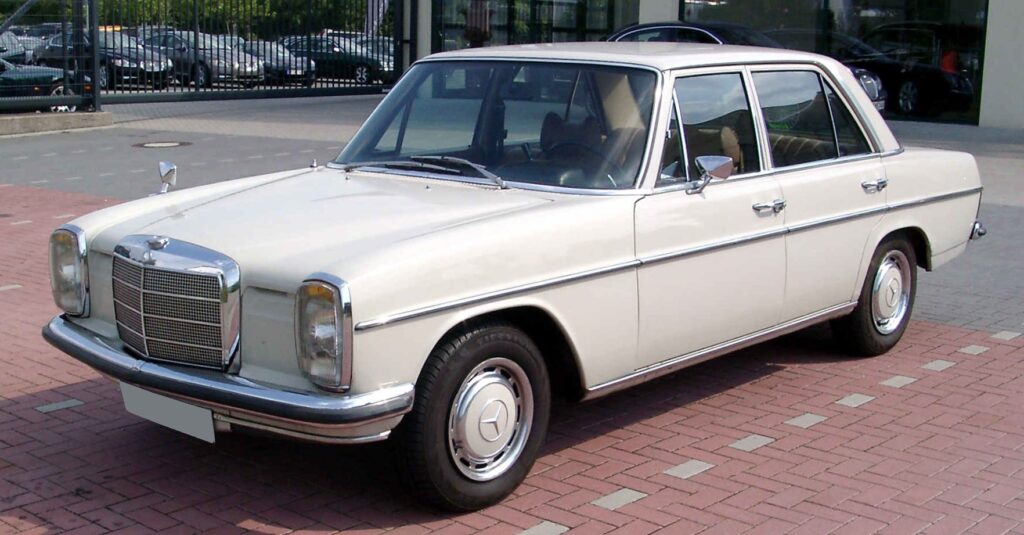
The 1968 Mercedes-Benz W114 Wagon (often marketed as the 8 or W114 or W115 estate) entered production in the late 1960s as Mercedes’ compact luxury wagon. It’s becoming more sought after because it combines European luxury, classic Mercedes build quality and the seldom-seen station-wagon format in its line. Listings suggest well-preserved cars can fetch $25,000 to $40,000, depending on mileage and condition. The appeal stems from its refinement, brand prestige and practicality of wagon form. It attracts collectors who like European classics but want wagon practicality.
What strengthens its collector appeal are correct engine configurations (e.g., the 2.8 L six-cylinder), original interior trim and low rust examples, particularly from dry-climate states. Because many of these were used hard and left rusted or modified, a clean original is rare. European wagon-things from that era are fewer than American ones, giving this model an edge. For someone looking to add a quality European vintage wagon to a collection, this is a strong candidate. It represents a blend of luxury, practicality, and collectibility in one package.
1991 Jeep Grand Wagoneer

The 1991 Jeep Grand Wagoneer marked one of the last years of traditional full-sized American wagons from Jeep before SUVs took over. It’s being rediscovered by collectors because it blends nostalgic styling, wood-grain exterior trim, big V8 power and a late-era wagon authenticity. Market values for good rust-free examples currently sit around $30,000 to $35,000, with top examples going higher. The appeal lies in its full-sized wagon format with Jeep heritage rather than transitioning into the SUV space. For collectors seeking something rugged, vintage and collectible in wagon form, this Jeep hits multiple notes.
What enhances its appeal is correct original drivetrain (5.9 L V8) and original wood-grain panels, intact interior and lower mileage examples. Because many were driven into the ground as everyday vehicles, survivors are rarer than expected. This makes clean, documented examples valuable. For someone who wants a vintage wagon with presence and off-road Wagon cross-over feel, this model is interesting. As wagon formats gain renewed interest, vehicles like this are getting attention from both collector car and SUV-heritage buyers.
1959 Edsel Villager

The Edsel Villager was produced between 1958 and 1960, and the 1959 version is especially rare as part of the short-lived Edsel brand. Its revival among collectors comes from its quirky styling, limited production numbers, and the curious history of the Edsel marque. Current market values for well-restored ’59 Villagers are estimated around $20,000 to $30,000, though condition and whether it retains original trim matter a lot. It appeals to those who like classic station wagons with a bit of unusual story behind them. Since the brand’s demise came quickly, the survivors carry extra interest.
Interest grows when the body, interior and mechanicals are original, with matching engine and correct trim. Because many Edsels were scrapped or heavily modified, finding one that’s unrestored or lightly restored gives it an edge. Its two-piece tailgate and distinctive styling make it stand out among wagons of the era. For a collector of off-beat classics, this Villager makes a strong case. It shows how family-vehicle design from the late 1950s can now draw attention from serious buyers.
1957 Mercury Colony Park

The Mercury Colony Park was launched in 1957 with wood-grained paneling and upscale trim as Mercury’s luxury wagon offering. It’s finding renewed appreciation because the wood-style exterior, large size, and stylish design mark it as distinct among family wagons. Auction prices for nicely restored 1957 Colony Parks currently fall in the $30,000 to $50,000 region, depending on originality and body condition. It appeals to collectors who value the woodie aesthetic and full-sized American wagons. The early examples with the original trim are particularly prized.
Survival of original woodgrain siding without heavy corrosion or replacement panels increases value significantly. Many of these wagons were used hard, carried many passengers and luggage, leading to body damage and rust issues. Finding one with the correct engine, transmission and minimal modification gives it extra appeal. For someone looking for vintage wagons with strong presence and design flair, this Colony Park hits that mark. It reminds collectors that wagons weren’t just practical-they could be stylish too.
1965 Buick Sport Wagon
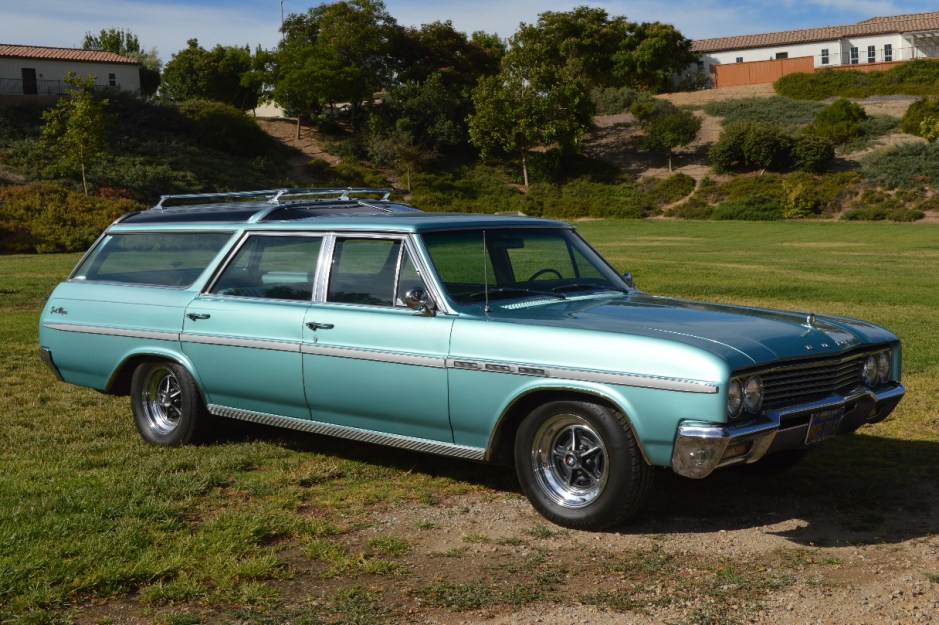
The Buick Sport Wagon of 1965 combined a station wagon body with a glass sky-roof panel option and V8 power, giving it a sporty-practical feel at the time. It’s now drawing interest among collectors because of that dual character and the limited number of well-kept examples. Present day values often sit around $25,000 to $30,000, especially when the sky-roof model and period correct engine are present. Its appeal comes from offering both performance and family-car utility in one package. For someone who appreciates unusual station wagons with interesting features, this Sport Wagon delivers.
Original condition including intact glass roof, correct engine size and good bodywork are what raise desirability. Many of the sky-roof versions had extra complexity (leaks, mechanical glass panels) and thus fewer survived well. Because of this, clean examples are less common. For a collector focused on unique features in wagons from the 1960s, this Buick is a strong contender. It shows how the station wagon format could be playful rather than simply practical.
This article originally appeared on Avocadu.
